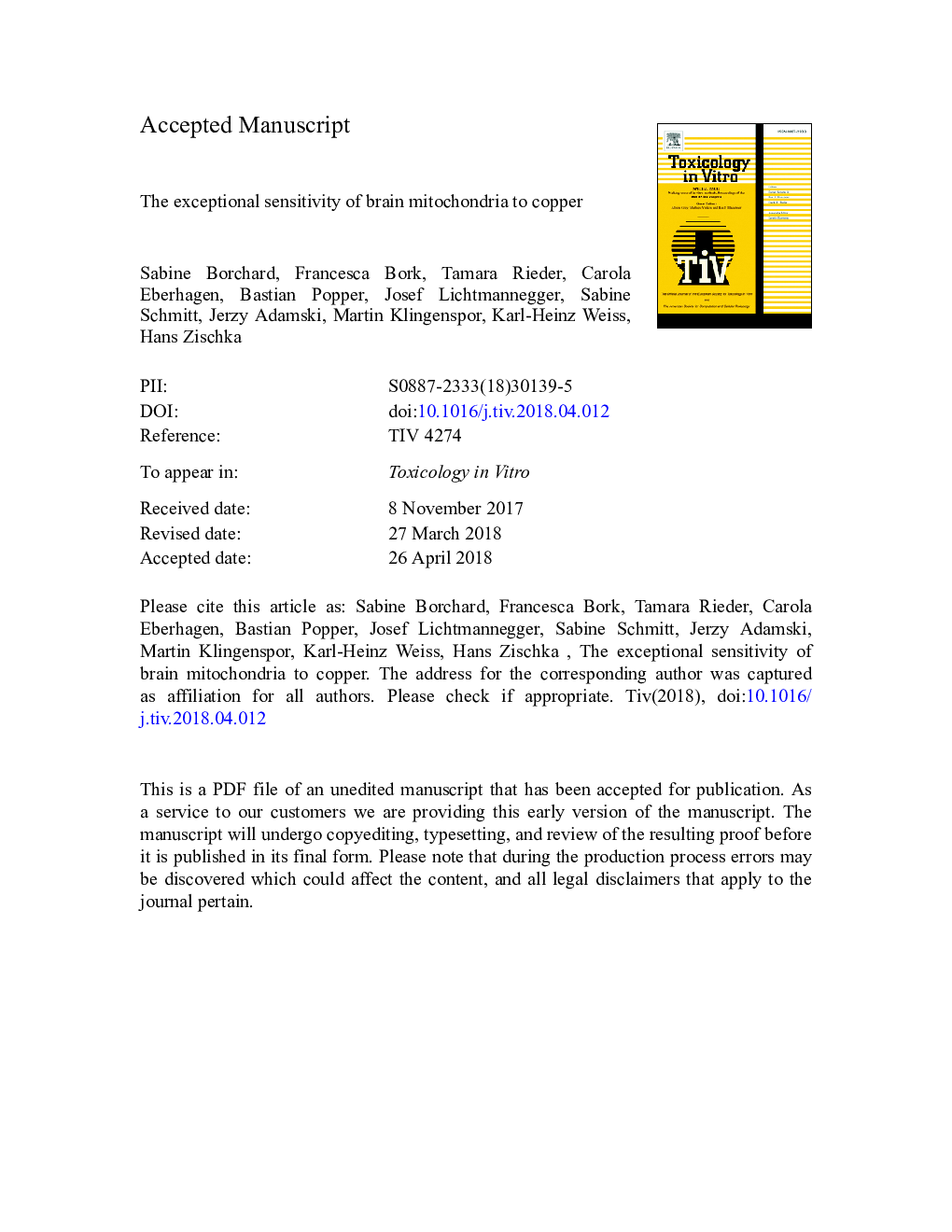| Article ID | Journal | Published Year | Pages | File Type |
|---|---|---|---|---|
| 8553729 | Toxicology in Vitro | 2018 | 38 Pages |
Abstract
Wilson disease (WD) is characterized by a disrupted copper homeostasis resulting in dramatically increased copper levels, mainly in liver and brain. While copper damage to mitochondria is an established feature in WD livers, much less is known about such detrimental copper effects in other organs. We therefore assessed the mitochondrial sensitivity to copper in a tissue specific manner, namely of isolated rat liver, kidney, heart, and brain mitochondria. Brain mitochondria presented with exceptional copper sensitivity, as evidenced by a comparatively early membrane potential loss, profound structural changes already at low copper dose, and a dose-dependent reduced capacity to produce ATP. This sensitivity was likely due to a copper-dependent attack on free protein thiols and due to a decreased copper reactive defense system, as further evidenced in neuroblastoma SHSY5Y cells. In contrast, an increased production of reactive oxygen species was found to be a late-stage event, only occurring in destroyed mitochondria. We therefore propose mitochondrial protein thiols as major targets of mitochondrial copper toxicity.
Keywords
Related Topics
Life Sciences
Environmental Science
Health, Toxicology and Mutagenesis
Authors
Sabine Borchard, Francesca Bork, Tamara Rieder, Carola Eberhagen, Bastian Popper, Josef Lichtmannegger, Sabine Schmitt, Jerzy Adamski, Martin Klingenspor, Karl-Heinz Weiss, Hans Zischka,
